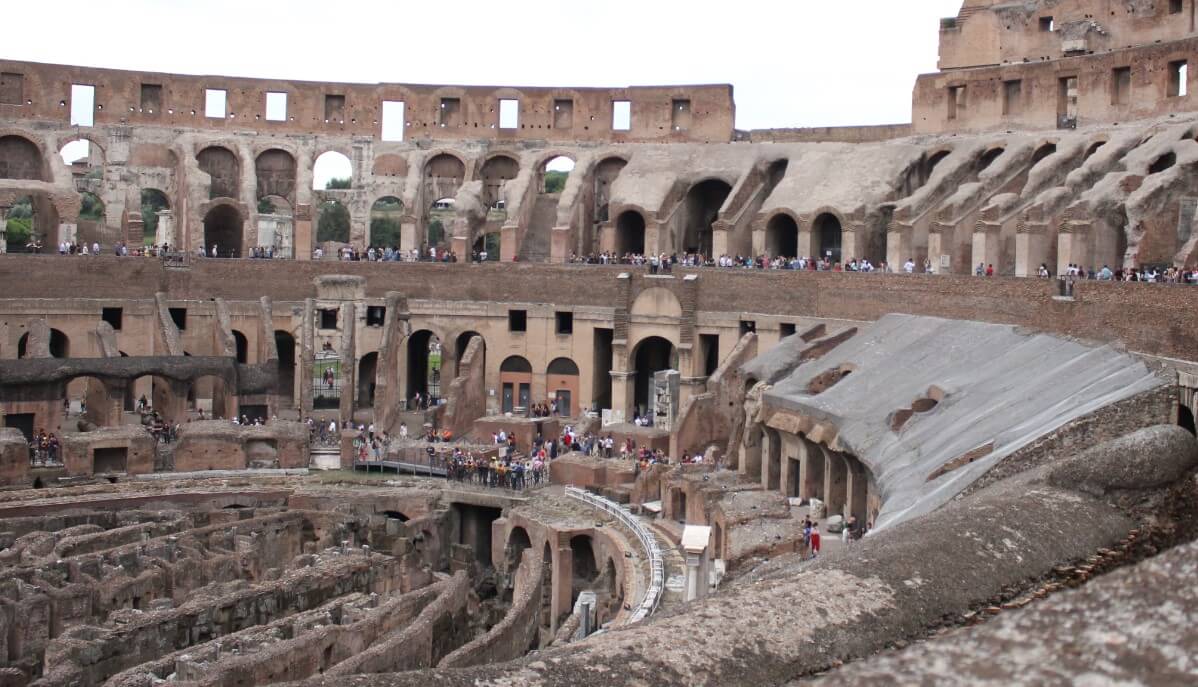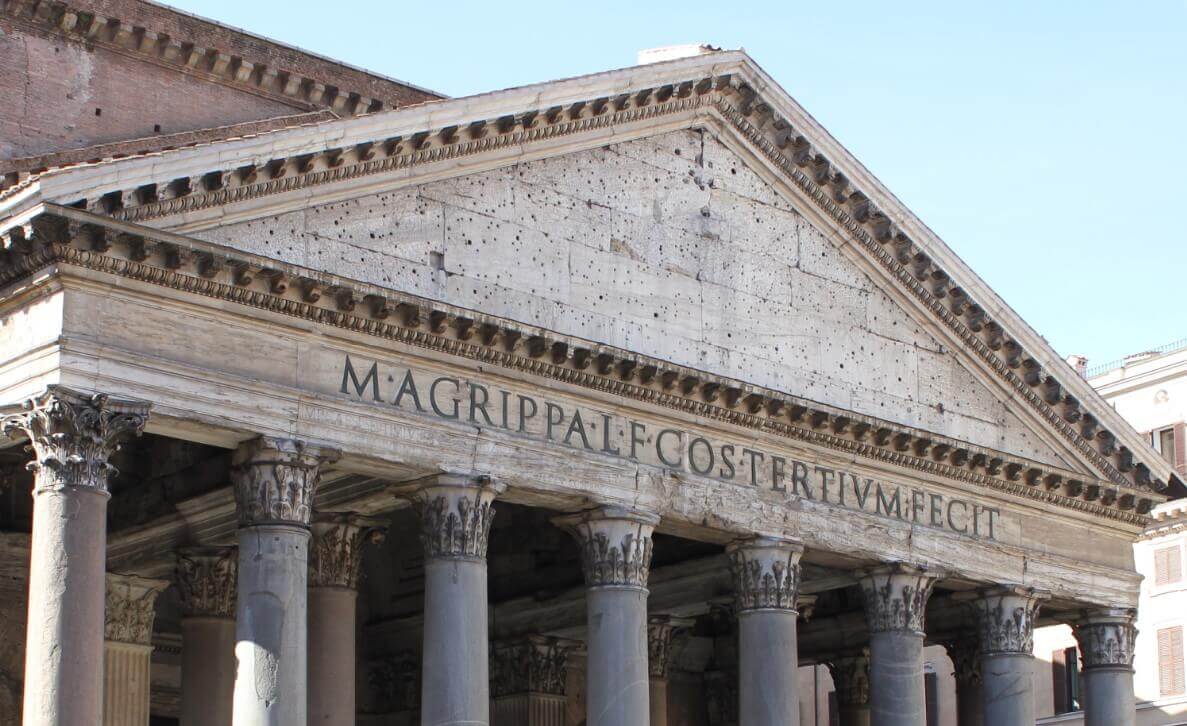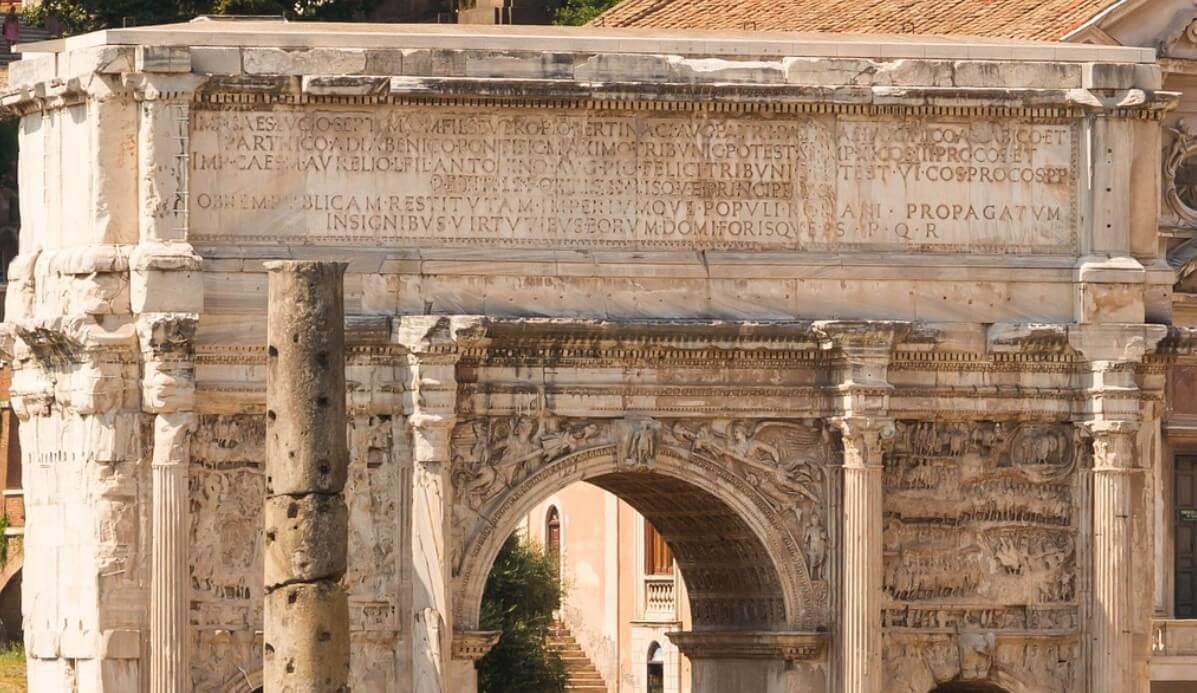
Famous Rome Monuments & Landmarks you Need to Visit
The monuments of ancient Rome are the subject of study the world over! With over 50 major Roman landmarks to be explored in the city, you’ll be spoiled for choice!
Visit these beauties and you will feel connected to an empire that stretched through Europe to Africa and western Asia. Read this article in conjunction with our Roman Ruins page to help you decide the ones you want to visit.
Contents
- 1 How many Ancient Roman monuments are there
- 2 Check our Free guide of Rome on your mobile
- 3 The most famous monument in Rome
- 4 10 popular Rome monuments in Italy
- 5 Ancient Roman Buildings and Monuments – a Map
- 6 More Roman Empire Monuments worth of visiting
- 7 Frequently asked questions about monuments in ancient Rome
- 8 Conclusion on Rome monuments
How many Ancient Roman monuments are there
Do you think if you have seen one Rome monument you have seen em all? Think again! There are around 50 key Roman landmarks that you could visit when in Rome. From the Colosseum right through to items in the Vatican, ancient baths and triumphal arches, you would need weeks to explore them all!
The amazing thing about these Rome monuments is that some are extremely well preserved. Others – such as the Pantheon – are still in use to this day!
Check our Free guide of Rome on your mobile
The most famous monument in Rome
Ask in your hometown what the most famous Roman landmark is. You will find people that have never even visited Rome before will still be able to name the Colosseum! This is perhaps the most famous monument in Rome.
The Pantheon and the Roman Forum are however close runners up, depending on who you ask! They are known for their rich history and their amazing view they give us on life back in the day.
10 popular Rome monuments in Italy
Let’s check out the most famous monuments in Rome, Italy!
1. Colosseum

We mentioned of course the Colosseum already. And who couldn't!
It is one of Rome’s most famous landmarks. Completed by Titus in 80AD, the Colosseum is recognisable the world over. 50,000 spectators could be crammed in here to watch a bit of gore, blood and good old Roman sports!
The Colosseum is so great, it needs its own page. Lucky for you we already made one. Check out 7 Things you need to know before you visit Colosseum. Oh, and don’t forget to check out which city passes include free or skip the line access entry.
2. Pantheon

The Pantheon is another well known Rome monument. It is actually now a church, but it used to be a temple to the gods. It is believed to be a reconstruction of an even older temple from 14AD. Emperor Hadrian is credited as having led the reconstruction . Known for being one of the most well preserved monuments on earth, the Pantheon has been copied by architects the world over for centuries.
3. Castel Sant’Angelo

Speaking of good old Hadrian – his tomb is actually one of the most famous Roman landmarks in Italy. Formerly one of Rome’s tallest buildings, the mausoleum turned museum was finished in 139AD. The treasures and remains of dignitaries were destroyed by Visigoths when Rome was sacked in 410AD. Some treasures that remained ended up in St Peter’s Basilica, where they can still be seen today. You can learn more about Castel Sant'Angelo here.
4. Curia Julia

The Curia Julia was the house of the senate in ancient Rome. It dates back to 44BC as essentially revision 3 of the senate houses. Located within the Roman Forum, the Curia Julia started with Julius Caesar. He was assassinated during the works, so Augustus Caesar finished it in 29BC. Like the Pantheon, the building itself is very well preserved as it had been in use for a long time.
5. The Arch of Septimius Severus

This beautiful white marble arch is located within the Roman Forum as well. As with many triumphal arches, it was constructed to celebrate victory in battle. In the case of the Severus Arch, the wars against the Parthians, ending in 199 AD, are the cause. Septimus Severus and his two sons were commemorated here. But later, the boys became joint emperors until Carcalla had his bro Geta killed. Any reference to Geta was removed from the arch afterward.
6. The Arch of Constantine

Another pretty decent triumphal arch is the Arch of Constantine. You’ll find this one near the Colosseum. It sits across the Via Triumphalis, which was the route of choice for returning victorious warriors.
7. Pyramid of Cestius

A fun one – a pyramid in Rome. Of course, the inspiration came from Egypt or Nubia. It is one of the best preserved monuments in ancient Rome, albeit lesser known. It is thought that the strategic location of the structure – at an intersection of important routes – helped with its preservation.
8. The Arch of Titus

Triumphal arches are featuring heavily on this Rome monuments list, and rightly so. They were an important display of victory and power. This one commemorates victory over Jerusalem. You can even see a Jewish Menorah being carried off on one of the walls.
9. Baths of Caracalla

Baths of Caracalla were used for centuries from 216 AD for vast numbers of locals. They would come not only to bathe, but also to get their social fix, talk politics and of course, gossip.
10. Vatican City Monuments

The Vatican City deserves its own list of top 10 monuments! The Necropolis is one. Get the top level overview of the Vatican City here to help you decide just what to visit.
Ancient Roman Buildings and Monuments – a Map
Check out this trusty map of the top Roman landmarks to help plan your trip. If you are short for time, it might help to plan your route in advance. Or, even better – why not take a hop on hop off bus tour as soon as you arrive. The big companies generally cover a fairly extensive route of the big attractions. Also, some of the Rome City Passes include free bus tours.
More Roman Empire Monuments worth of visiting
Oh my goodness there are so many! It’s amazing to see the span of the Roman Empire seen through the mark it left on Europe and North Africa. Here’s a selection of just a few of them.
Rome monuments in France
France has an amazing selection, especially in the south.
- You can grab a coffee in the shade of the Maison Carree in Nimes before touring the city’s impressive amphitheatre.
- Then, head to Arles a short drive away where its 1st century arena is still in use.
- The Pont du Gard – a huge aqueduct still used as a footbridge until the 18th century, is down this way as well.
Rome monuments in Spain
- Stretching 2 kilometres, the walls of Lugo are largely in good condition. The city is the only one in Europe still surrounded by Roman walls. Class!
- Alcántara Bridge in Extremadura known for its arches
- The Tower of Hercules is a 2nd century lighthouse that is still in use today!
Roman landmarks in Turkey
- The Aspendos Theatre is one of the best preserved examples of a theatre. Located in Antalya province, Turkey, it was later used as a roadside inn for travelers. It was therefore repaired and maintained. The theatre is still in use today!
Rome monuments in Tunisia

- Sbeitla is the best kept and preserved Roman town in Tunisia. Hosting an annual festival, you can visit to see the temples, baths and other buildings still standing today.
- Dougga is a UNESCO site that, unlike Carthage, is pretty well preserved.
Roman landmarks in Syria
- The Bosra theatre is another example of a fantastically well preserved Roman monument. It was surrounded by a fortress wall by the Ayyubid dynasty, so it is in pretty good condition. It could have held up to 15,000 people. Restorations in the 1950s revealed huge amounts of sand within the interior. It is thought this protected the insides.
Rome monuments in United Kingdom

- Hadrian’s Wall was built to stop tribes from Scotland invading. It was 117kms long and you can still see bits of it today. Remarkably it stretched from the Irish Sea coast to the North Sea.
Back to Italy
Of course, Rome isn’t the only place with Roman monuments in Italy. From Pompeii and Herculaneum to the Verona Arena, there is more to see beyond the capital.
Frequently asked questions about monuments in ancient Rome

What does the abbreviation SPQR on Roman monuments mean?
This used to be the symbol of the state. SPQR stands for Senatus Populusque Romanus, and means in English “Roman Senate and People”.
What is the oldest monument in Rome?
The oldest monument in Rome that is still in use - and has been since its creation - is the Pantheon.
What monuments are made of Roman concrete?
Roman Concrete was made in a way that would stop cracks spreading. The Pantheon is one of the best preserved examples of Roman concrete construction.
Did lightning ever strike a Roman monument?
Roman temples were often built on places where lightning had struck, as it was believed to be sacred ground.
How are the monuments described in Roman fever?
The Roman Forum, the Colosseum and the Palatine are portrayed as beautiful, powerful and eternal. The story uses the monuments to connect to the lives of the characters.
How much does it cost to visit monuments in Rome?
Some monuments are free to visit in Rome! These include of course St Peter’s Basilica as well as the Pantheon. Others cost to enter - some around €10. Make the most of your visit with a city pass to cover all the paid for attractions.
Who is buried in Roman tomb monuments?
The city of Rome contains a huge number of dignitaries, popes, royalty and random foreigners buried within the area. Umberto 1st of Italy is buried in the Pantheon, as is Raphael.. Emperor Caracalla is buried in Castel Sant’Angelo.
In the Vatican Necropolis - a burial site created because Roman law dictated that no burials should happen in the city - lies St Peter. Julius Caesar's family is also buried here.
Conclusion on Rome monuments
That’s our overview of the Roman monuments in Rome and beyond! Make sure you check out the other guides mentioned in this article for more history, facts and tips.
We would recommend a city pass if you are interested in hitting the big sights and top attractions in Rome. Let us know how you get on!
Fanny is a music and travel lover who has been visiting Rome since 2012. She is the founder and main editor of the Roma Pass blog and she like to share the best things to do in Rome.
